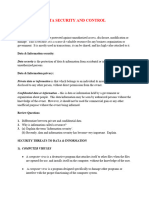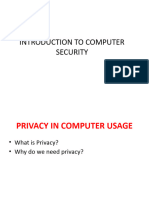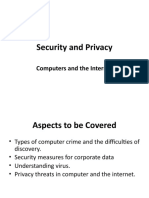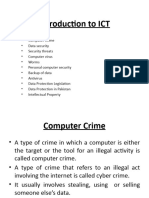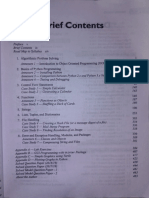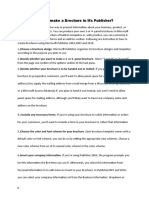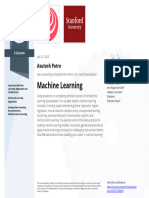Data and information privacy is a fundamental aspect of modern computer science, affecting
individuals, organizations, and governments worldwide. Private data refers to information that
belongs to an individual and must not be accessed or disclosed to others without explicit
permission from the owner. Examples of private data include personal identification numbers,
medical records, and financial details. In contrast, confidential data is information held by
governments or organizations about people, which must be protected from unauthorized access
to maintain trust and security.
The distinction between private and confidential data is crucial for understanding privacy
practices. Private data is controlled by the individual, while confidential data is managed by
institutions and often requires strict protocols for access and sharing. User consent is a key
principle in data sharing, ensuring that individuals have control over who can access their
information and for what purpose. Without proper consent, data sharing can lead to breaches
of privacy, loss of trust, and legal consequences.
Security threats to data and information privacy are diverse, with computer viruses being one of
the most common and damaging. A computer virus is a destructive program that attaches itself
to other files and installs itself without the user's permission when those files are opened.
Viruses can corrupt data, steal information, and disrupt system operations. There are several
types of computer viruses, each with unique mechanisms of infection and threat profiles:
1. Boot sector viruses destroy the booting information on storage devices, making computers
unable to start properly.
2. File viruses attach themselves to files and spread when infected files are opened or shared.
3. Hoax viruses arrive as emails with attractive subjects and activate when the email is opened,
often tricking users into spreading the virus further.
4. Trojans appear to perform necessary functions but secretly execute undesirable activities in
the background without user knowledge, such as stealing data or creating vulnerabilities.
5. Worms are viruses that reside in computer memory and replicate themselves to spread
across networks, causing widespread damage.
6. Backdoors may be Trojans or worms that allow hidden access to a computer system, enabling
attackers to bypass security controls.
�Effective control measures are essential for preventing and managing computer virus infections.
Installing the latest versions of anti-virus software on computers is a primary defense, but it is
equally important to continuously update the software with new virus definitions to counter
emerging threats. Safe handling of external storage devices, such as diskettes and USB drives, is
also critical; these devices should be scanned for viruses before use to prevent the introduction
of malware into secure environments. Additionally, users should avoid opening email
attachments before scanning them for viruses, as attachments are a common vector for
infection.
By understanding the principles of data and information privacy, recognizing the types and
mechanisms of computer viruses, and implementing effective control measures, individuals and
organizations can protect sensitive information and maintain the integrity of their digital
systems. Collaboration among peers, critical thinking, and strong communication skills are
essential for addressing privacy challenges and developing innovative solutions in the field of
computer science.





